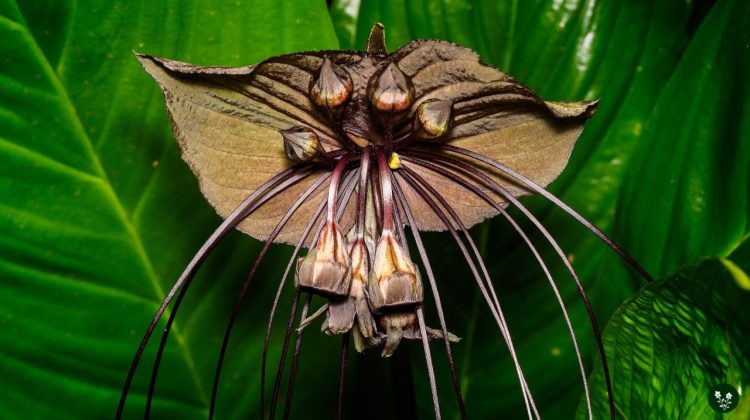
Unique, exotic, and fascinating adjectives can be used to describe bat flowers.
The name already says it all; this flower shape resembles a bat with its spreading wings.
Although the shape is a little unusual, it can be your new favorite in the flower garden.
However, before you visit the nurseries or plant sale websites to buy one, look at some interesting bat flower facts and learn about its planting and care guide.
In this article, we'll cover
1. Bat Flower Facts and Characteristics
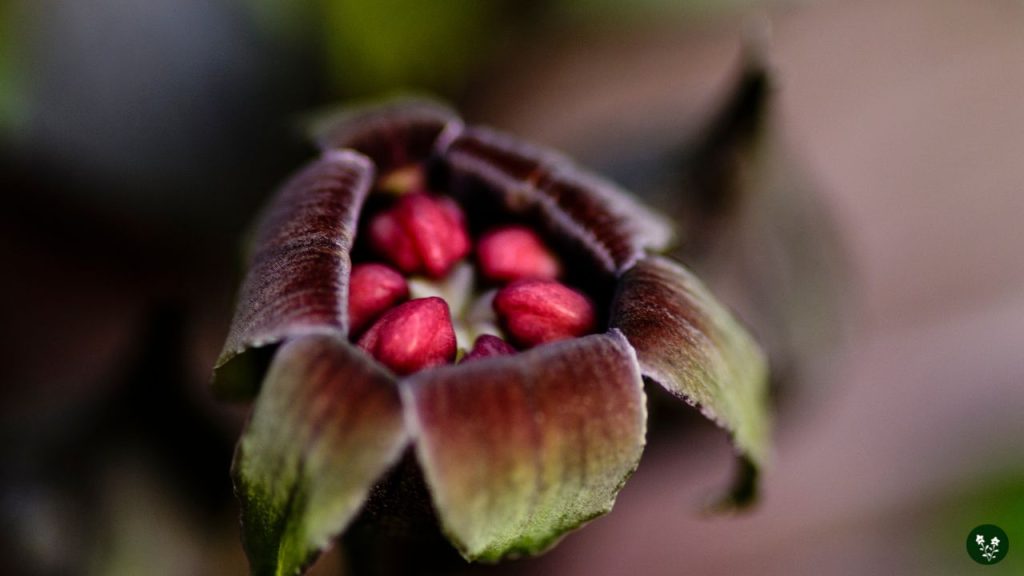
The bat flower (Tacca chanter) is one of the most awesome flowers that can be planted outdoors and indoors.
This flower is a type of orchid that looks like a flying bat in shape and color.
As a native tropical flowery plant of Asia, these flowers grow wildly in Southern China, especially in Yunnan Province.
It can also be found in Southeast Asian countries like Thailand and Malaysia.
Although it is classified as a tropical plant, this flower can be grown in subtropical areas.
However, the flowers will dry out during the fall and winter cool seasons.
In locations with a warm climate, the flower will be a great addition to the outdoor garden.
Meanwhile, in areas with lower temperatures, it can serve as a houseplant or indoor plant.
The unique-shaped flowers usually start to appear in spring and continue to bloom until the beginning of the fall.
In addition to the blooms that become the main attraction, this flowering plant is complemented by ruffled leaves and long filaments.
2. Some Varieties of Bat Flower
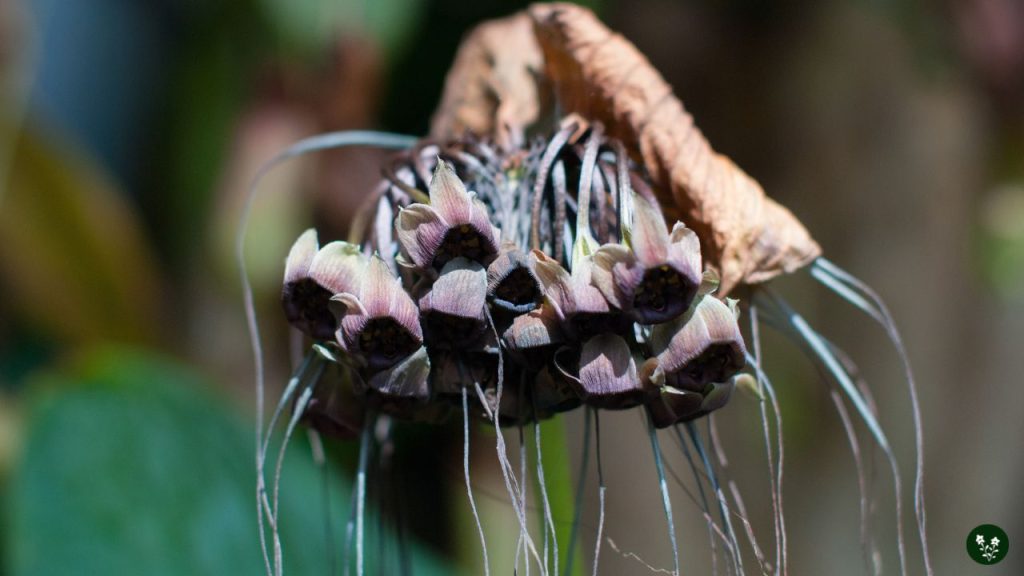
Several varieties of bat flowers differ in color. Here are some of the most popular ones:
- The black bat flower is the most common type of Tacca chanter that can be easily found and grown indoors or outdoors. It has large and smooth leaves in bright shades of green.
- White bat flower, a rare variety, is known as Tacca integrifolia. It is considered a newer version of the black flower and is characterized by white brackets.
- Red bat flower, also known as Cuphea llavea or bat-faced cuphea. This variety has smaller petals than the black and white flower. Its flower color is a combination of bright red and deep purple.
3. Black Bat Flower Meaning and Symbolism
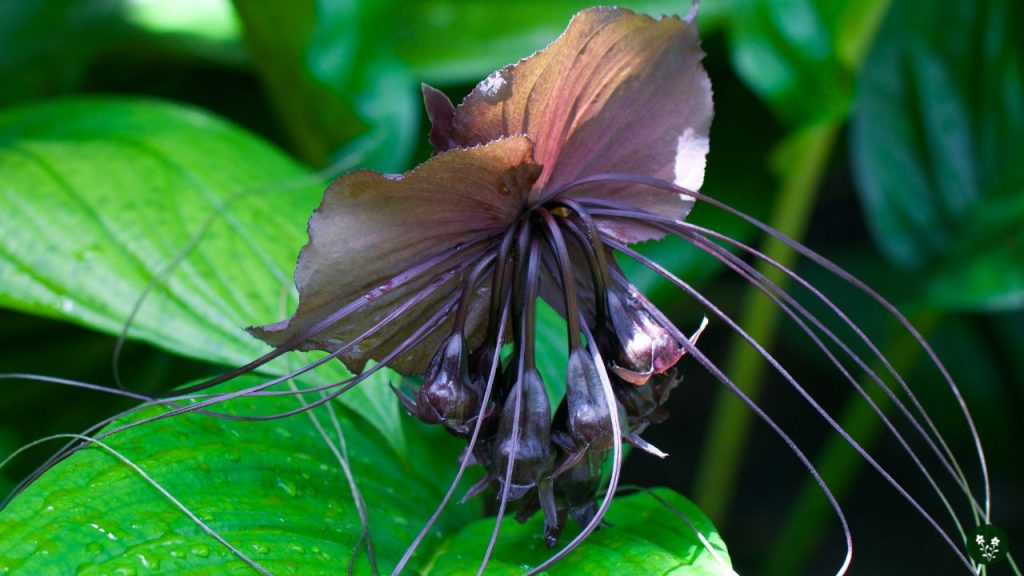
Black flowers are generally associated with strong, powerful, and mysterious energy.
The bat flower’s meaning and symbolism are more or less the same as a type of black flower.
The exotic bulbs are usually used to symbolize strong awareness and intuition.
In its native countries, it is often linked to superstitions. Legend believes this flower might invite evil spirits if you stare at it for a long time.
Some beliefs even express that those who find the wild bat flower may die suddenly or experience the loss of close relatives.
4. How to Grow Bat Flower
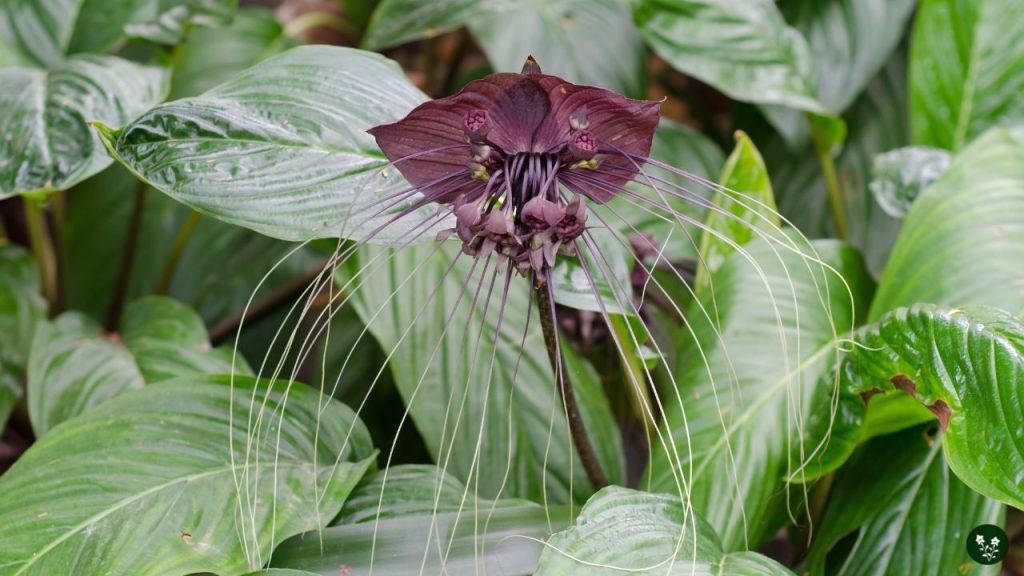
Whether you grow them in the garden or indoors, some required conditions should be fulfilled, including soil, temperature, and light requirements.
Soil Requirements
Bat flowers should be planted in light and well-draining soil. You can mix the soil with perlite and vermiculite to create a planting medium with better water circulation.
Temperature Requirements
Bat flower prefers an average level of heat. In the ideal setting, you should keep the temperature above 13 degrees Celsius (55 degrees Fahrenheit).
However, please note that this flower cannot withstand extreme coldness or heat.
Light Requirements
Although it likes to thrive in warm temperatures, it doesn’t need to be exposed to full sun.
When you plant it outdoors or in the garden, the flower should be kept in shady areas or a location with partial shade.
As for indoor growing, you can place the flower near the window so that it can receive an ample amount of sunlight during the daytime.
5. Caring for Bat Flower
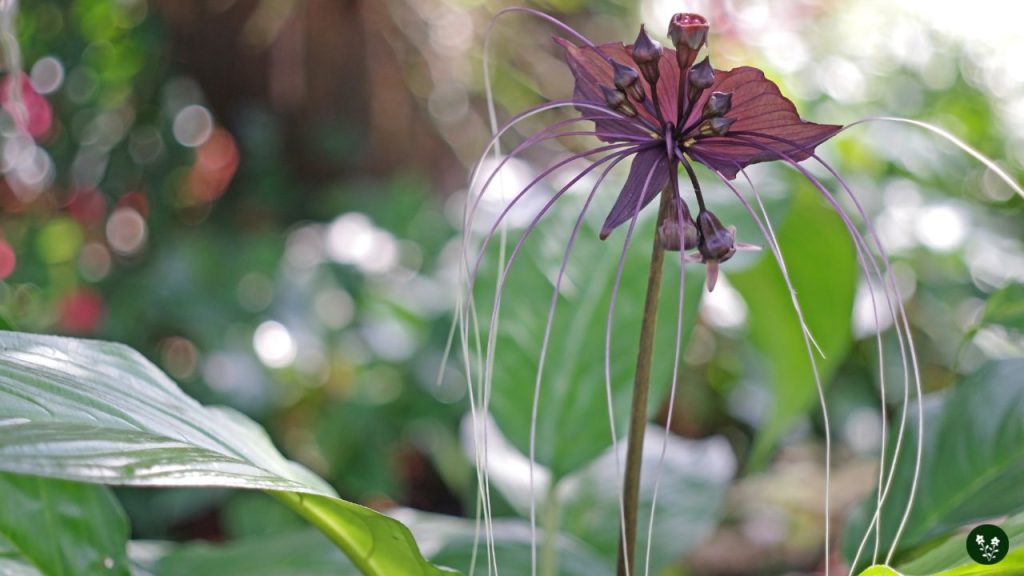
Like most types of orchids, a bat flower needs special attention to thrive and bloom better.
In general, bat flower care includes regular watering, fertilizing, and repotting after a certain period.
Watering
Watering should be done regularly, just enough to keep the plant moist but not too soggy.
Regular watering is most necessary in a warmer period, from late spring to late summer.
Don’t let the root dry out. Otherwise, the plant and the flower will start to wilt.
Fertilizing
You can fertilize this flower with the regular houseplant food usually used on orchids or azaleas.
Fertilizer with acid boosting is also acceptable for this ornamental plant. The plant itself can be fertilized once a month or every six weeks.
Repotting
Bat flower doesn’t like to be root-bound, so annual repotting is needed when your mature plant experiences rapid growth.
You don’t need to choose containers in a bigger size when repotting.
Instead, choose a pot that has a similar size to the old one. Trim the roots carefully before you move the plant into the new pot.
6. Bat Flower Propagation
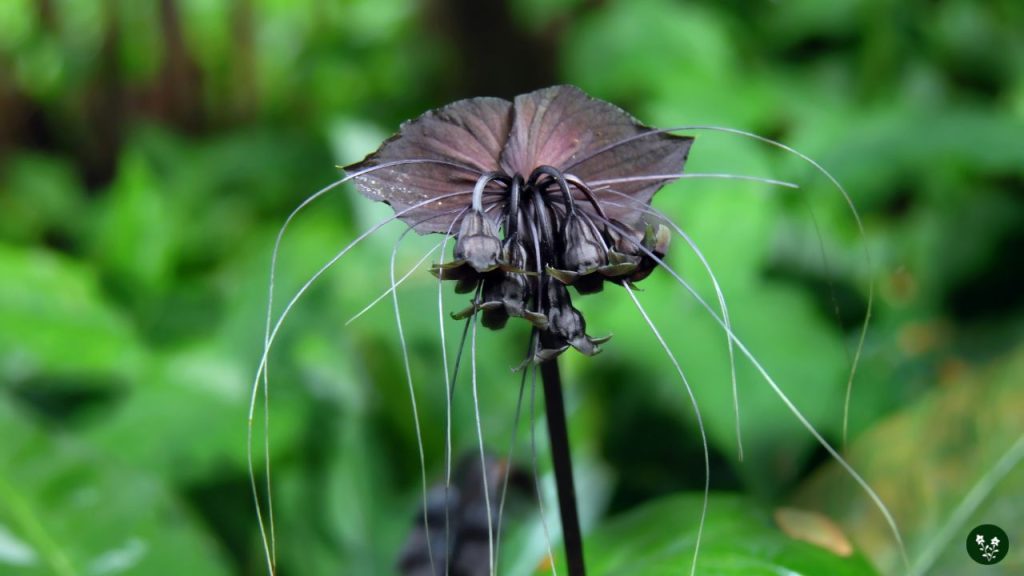
Those interested in growing bat flower usually go for the large or adult plant.
This is because the larger plant has a greater chance and success rate to grow into a magnificent houseplant or garden flower.
Also, having an adult flower allows you to propagate the plant and obtain seeds for re-growing.
It is important to mention that the seeding propagation of bat flowers may take months to complete.
If you want a shorter process, the rhizome or root propagation is the alternative method.
The process can be done during the fall. All you need to do is dig up the rhizomes from the mature plant, divide them into clumps, and replant them in another pot or container.
There are many more interesting facts that you can explore about the flower, but the basic information above should be enough for starters.
Once you’ve set the planting medium as required, you can start to grow this unique and fascinating flower in your garden or home, depending on the climate in your area.
Explore the beauty and symbolism of flowers:
Leave a Reply